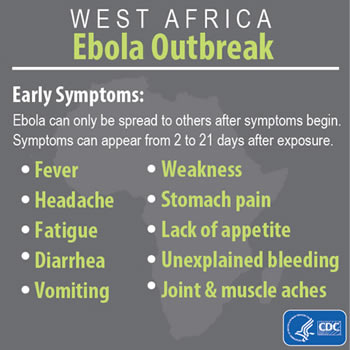Difference between Ebola and Malaria
Key Difference: Ebola is a rare and deadly disease that kills 25% to 90% of the people it infects. Malaria is an infectious disease that spreads mainly in tropical and subtropical regions. There are five different types of viruses that cause Ebola and there as five different types of protozoans that cause malaria.
 Ebola is a rare and deadly disease that kills 25% to 90% of the people it infects. Up to 2013, Ebola had a total of 1,716 reported cases in 24 outbreaks. In the 2014 West Africa Outbreak, Ebola has 13,042 reported cases that resulted in 4,818 deaths by 2nd November, 2014. While, malaria is an infectious disease that spreads mainly in tropical and subtropical regions. According to the World Health Organization, there were 207 million cases of malaria in 2012, which led to between 473,000 and 789,000 deaths.
Ebola is a rare and deadly disease that kills 25% to 90% of the people it infects. Up to 2013, Ebola had a total of 1,716 reported cases in 24 outbreaks. In the 2014 West Africa Outbreak, Ebola has 13,042 reported cases that resulted in 4,818 deaths by 2nd November, 2014. While, malaria is an infectious disease that spreads mainly in tropical and subtropical regions. According to the World Health Organization, there were 207 million cases of malaria in 2012, which led to between 473,000 and 789,000 deaths.
There is a similarity between Ebola and Malaria, there are five different types of viruses that cause Ebola and there as five different types of protozoans that cause malaria. However, Ebola kills about 25% to 90% of its victims, while only the P. falciparum protozoan causes complications in malaria that lead to death. P. falciparum malaria can kill up to 25% of adults and 40% of children that it affects. However, the more common type of malaria caused by P. vivax, P. ovale, and P. malariae protozoans is usually gentle and treatable with antimalarial medications.
The early symptoms of Ebola can be very similar to malaria. The early symptoms of Ebola include fever, sore throat, muscle pain, and headaches. This can then quickly escalate to vomiting, diarrhea and a rash, as well as impaired kidney and liver function. In some cases, patients show both internal and external bleeding, such as oozing from the gums, or blood in the stools. This may eventually culminate to death between six to sixteen days of showing symptoms.
 Malaria’s symptoms typically include fever, fatigue, vomiting and headaches. It may also include shivering, joint pain, hemolytic anemia, jaundice, hemoglobin in the urine, retinal damage, and convulsions. In severe cases it may also cause yellow skin, seizures, coma or death.
Malaria’s symptoms typically include fever, fatigue, vomiting and headaches. It may also include shivering, joint pain, hemolytic anemia, jaundice, hemoglobin in the urine, retinal damage, and convulsions. In severe cases it may also cause yellow skin, seizures, coma or death.
Another difference between the two is the manner in which the disease is spread. Ebola can only be spread through contact with the bodily fluids, such as blood, saliva, mucus, vomit, feces, sweat, tears, breast milk, urine and semen of an infected person. The virus must enter the non-infected person’s body through the nose, mouth, eyes, open wounds, cuts and abrasions. Malaria, on the other hand, can only be spread through the bite of a female mosquito. The mosquito’s saliva transfers the parasite into the person’s blood. The parasites then travel to the liver where they mature and reproduce.
Comparison between Ebola and Malaria:
|
|
Ebola |
Malaria |
|
Known as |
Ebola virus disease (EVD), Ebola hemorrhagic fever (EHF) |
- |
|
Caused by |
a virus of the family Filoviridae, genus Ebolavirus:
|
Five species of parasitic protozoans (a type of single cell microorganism) of the Plasmodium type:
|
|
First Discovered |
In 1976 near the Ebola River in what is now the Democratic Republic of the Congo |
The parasite has been in existence for 50,000–100,000 years, but the population size of the parasite did not increase until about 10,000 years ago. References to malaria have been found beginning in 2700 BC in China. |
|
Natural Hosts |
Fruit bats of the Pteropodidae family |
Female Anopheles mosquito. |
|
Transmission |
|
|
|
Incubation period (the time interval from infection with the virus to onset of symptoms) |
2 to 21 days |
8 to 25 days |
|
Symptoms |
Fever, fatigue, muscle pain, headache and sore throat. Followed by vomiting, diarrhoea, rash, symptoms of impaired kidney and liver function, and in some cases, both internal and external bleeding. |
Headache, fever, shivering, joint pain, vomiting, hemolytic anemia, jaundice, hemoglobin in the urine, retinal damage, and convulsions. The classic symptom of malaria is paroxysm—a cyclical occurrence of sudden coldness followed by shivering and then fever and sweating, occurring every two to three days. |
|
Diagnosis |
Confirmation is made using the following investigations:
|
Confirmation is made using microscopic examination of blood using blood films, or with antigen-based rapid diagnostic tests. |
|
Treatment |
Rehydration with oral or intravenous fluids- and treatment of specific symptoms, improves rate of survival. |
Combination of antimalarial medications such as artemisinins, amodiaquine, lumefantrine, mefloquine, sulfadoxine, pyrimethamine, dihydroartemisinin and piperaquine |
Image Courtesy: cdc.gov, skinsheen.com









Comments
lukia
Tue, 11/07/2017 - 02:38
Add new comment